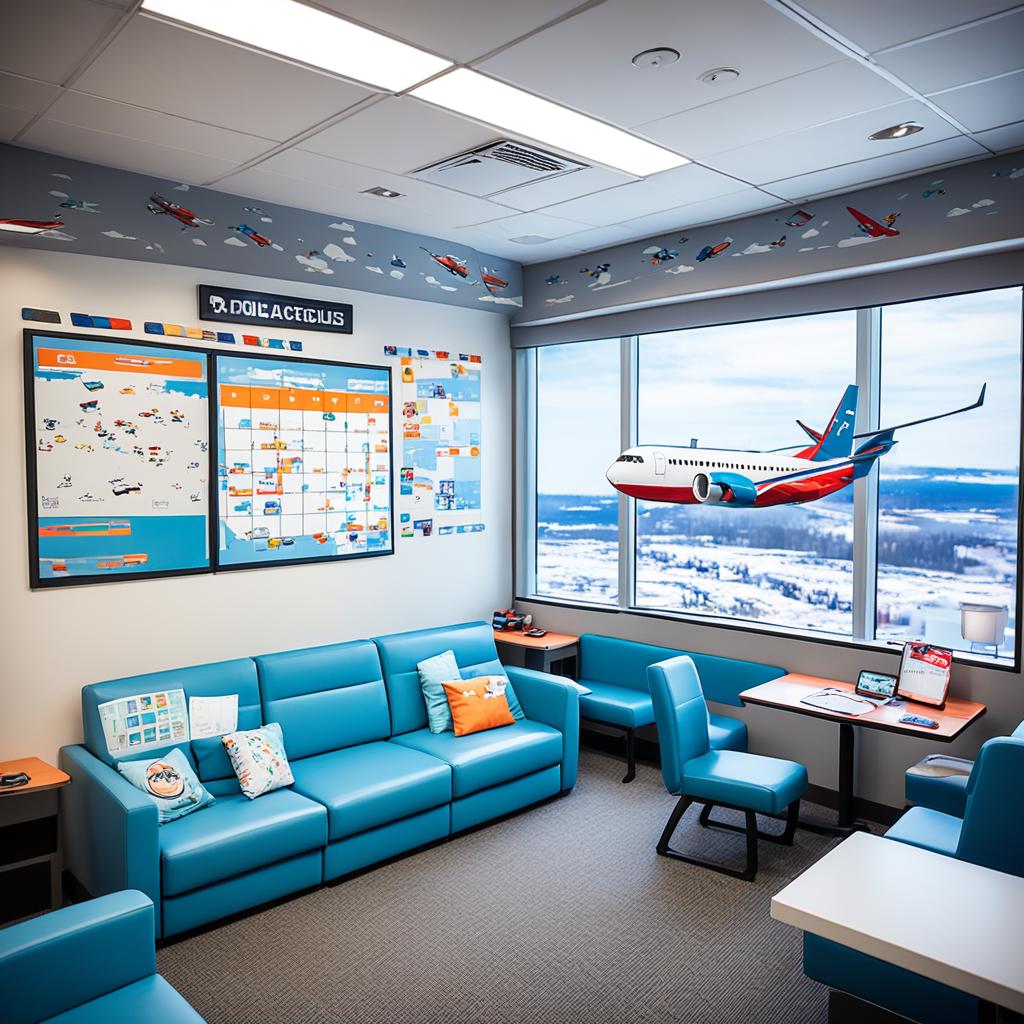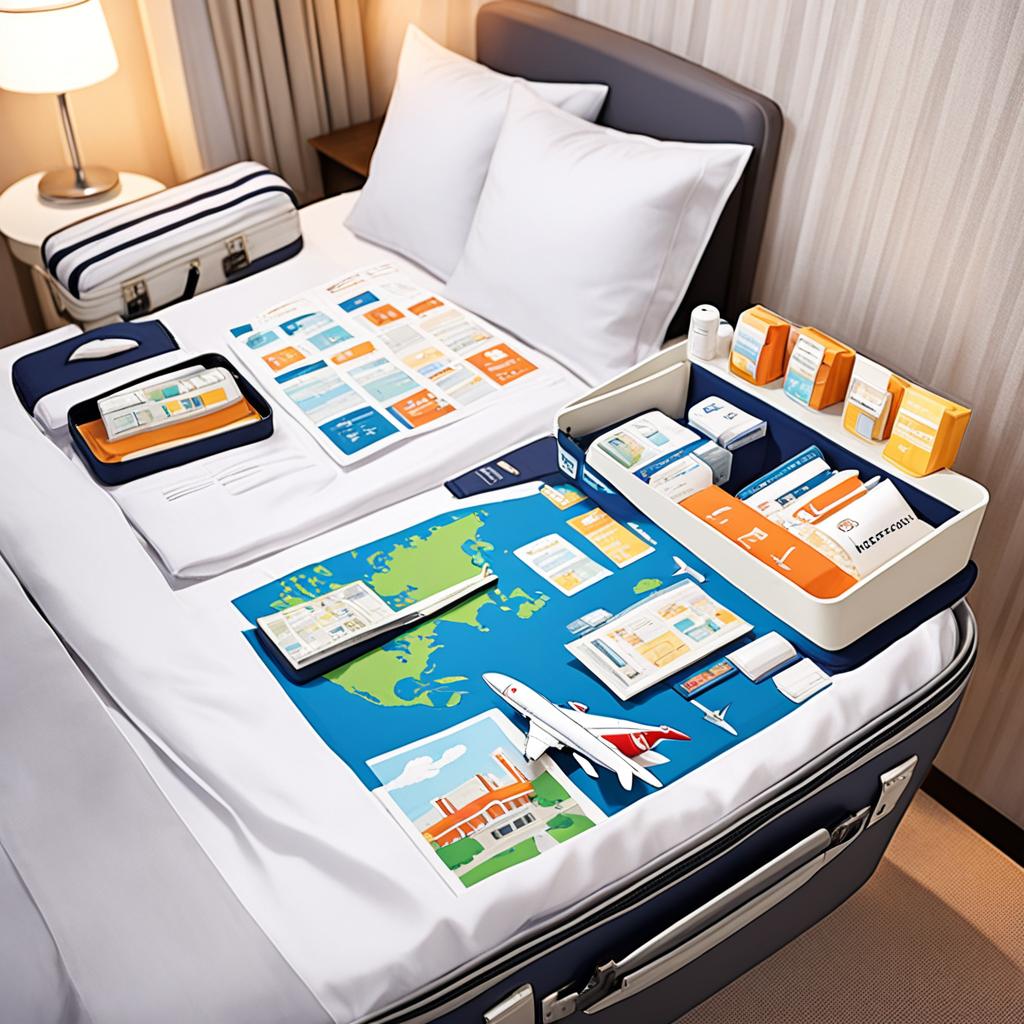When it comes to layovers and hotel accommodations, flight attendants often find themselves in unfamiliar cities for varying durations. But who is responsible for booking their hotel rooms? Are flight attendants left to handle it themselves, or is there a system in place to ensure they have a comfortable place to rest?
In this article, we will delve into the details of how flight attendants manage their hotel bookings. From airline policies and union contracts to alternative arrangements and cost-saving strategies, we’ll explore the various factors that influence where flight attendants stay during their layovers. So, let’s uncover the truth and gain insights into the world of flight attendant accommodations.
Flight attendants have fascinating journeys, but what happens when they need a place to stay overnight? Discover the inside scoop on how flight attendants navigate their hotel accommodations.
Airline Policies: Navigating the Rules and Regulations
When it comes to flight attendant accommodations during layovers, airline policies play a crucial role. Each airline has its own set of rules and regulations that determine the level of comfort and convenience provided to flight attendants. Let’s take a closer look at these policies and how they impact the experience of flight attendants on their layovers.
Airlines understand the importance of ensuring their flight attendants have suitable accommodations during their layovers. However, the specifics of these accommodations can vary depending on several factors. One such factor is the duration of the layover. For shorter layovers, airlines may provide access to crew lounges at the airport, equipped with rest areas and facilities for flight attendants to relax and freshen up between flights.
For longer layovers, airlines typically arrange hotel accommodations for their flight attendants. The location of the layover and the availability of hotels near the airport or in the city also influence the choices made by the airlines. Flight attendants may have the option to stay in hotels close to the airport to minimize travel time or in hotels in the city center to explore and enjoy their time off.
The size of the crew also plays a significant role in airline policies regarding accommodations. Larger crews may require multiple hotel rooms to accommodate everyone comfortably. On the other hand, smaller crews may have the advantage of more spacious accommodations, allowing for a more relaxed and enjoyable stay.
It’s important to note that flight attendant accommodations are not solely determined by airline policies. Union contracts, negotiated by flight attendant unions, often advocate for improved accommodations to ensure the well-being and satisfaction of their members. These contracts can include provisions requiring airlines to prioritize flight attendant comfort and safety during layovers.
Having an understanding of airline policies regarding flight attendant accommodations allows us to appreciate the efforts made by airlines to provide a comfortable and suitable environment for their flight attendants during their layovers. In the next section, we’ll explore more about crew rest periods and how airlines balance the need for rest with scheduling considerations.
Understanding Crew Rest Periods: Balancing Comfort with Scheduling

When it comes to the well-being of flight attendants, crew rest periods play a vital role. The Federal Aviation Administration (FAA) has set regulations that mandate minimum rest periods between duty periods to ensure the safety and effectiveness of flight attendants. These rest periods typically range from 9 to 12 hours, depending on the length of the trip.
Airlines are responsible for providing suitable rest locations for flight attendants during their layovers. The choice of accommodations depends on factors such as the duration of the layover and the availability of facilities. For longer layovers, airlines often arrange hotel rooms to allow flight attendants to get the rest they need. On the other hand, for shorter layovers, specialized airport crew lounges are available, providing a convenient and comfortable space for flight attendants to recharge.
| Rest Period | Accommodations |
|---|---|
| Long layovers | Hotel rooms |
| Short layovers | Airport crew lounges |
Proper rest periods and accommodations are crucial for flight attendants to maintain their well-being and perform their duties effectively. It ensures that they are well-rested and ready to provide exceptional service to passengers during their flights.
By prioritizing the comfort and schedules of flight attendants, airlines can create an environment that supports their physical and mental well-being, contributing to safer and more enjoyable travel experiences for passengers.
Unlocking Perks: Discounts and Benefits for Savvy Layover Stays
As a flight attendant, you have the opportunity to unlock a range of perks and benefits during your layovers. These advantages can enhance your travel experience while saving you money. Let’s explore some of the exciting perks available to flight attendants.
Flight Attendant Union Hotel Discounts:
Flight attendant unions often negotiate exclusive hotel discounts and agreements for their members. These discounts can significantly lower your accommodation expenses during layovers, allowing you to enjoy quality stays at reduced rates. Taking advantage of these union-negotiated discounts is a savvy way to maximize the value of your layovers.
Loyalty Programs:
Hotel and airline loyalty programs present another avenue for flight attendants to enjoy perks and benefits. By accumulating points through your frequent stays and flights, you can unlock rewards such as free nights, room upgrades, and access to exclusive amenities. Loyalty programs offer a valuable opportunity to enhance your layover experiences and make the most out of your travels.
Layover Discounts and Offers:
Some hotels and businesses extend special offers and discounts specifically for flight attendants. These deals can include discounted rates on dining, transportation, entertainment, and more. By leveraging these layover discounts, you can explore your layover destinations while saving money.
Exclusive Amenities:
In addition to discounted rates and rewards, flight attendants may be entitled to exclusive amenities offered by hotels. These can range from complimentary access to fitness centers, spas, or airport lounges to preferential treatment during your stay. These perks are designed to enhance your comfort and well-being during layovers.
By taking advantage of flight attendant perks, such as layover discounts and loyalty programs, you can transform your layovers into enjoyable experiences that provide both relaxation and savings.
Sharing Strategies: Crew Rooms and Roommate Options for Cost Savings

When it comes to layovers, flight attendants have devised various sharing strategies to save on costs. By taking advantage of crew room sharing and roommate options, these cost-saving strategies enable flight attendants to make the most of their layover accommodations without breaking the bank.
Many hotels offer discounted “crew rates” specifically designed for rooms with multiple beds, allowing flight attendants to split the cost with a colleague. This not only reduces expenses but also creates an opportunity for camaraderie and bonding between crew members. Additionally, sharing a room with someone in the same profession can provide a sense of familiarity and comfort during a layover in an unfamiliar city.
Some airlines go a step further and offer large crew lounges with free bunk rooms, showers, and kitchens. These dedicated crew lounges are equipped with essential amenities that flight attendants need to rest and refresh during their layovers. By providing these facilities at no extra cost, airlines prioritize the well-being and comfort of their crew members while also promoting a sense of community.
When flight attendants opt for crew room sharing or roommate options, not only do they save money on individual accommodations, but they also benefit from the knowledge and experiences shared by their fellow crew members. This collaborative approach fosters a supportive and empowering environment within the flight attendant community.
By implementing these cost-saving strategies, flight attendants can make the most of their layover accommodations without compromising on comfort or safety. The ability to share rooms or utilize dedicated crew lounges not only reduces expenses but also allows flight attendants to build strong connections with their colleagues. Ultimately, these sharing strategies contribute to a more fulfilling and financially sustainable layover experience for flight attendants worldwide.
Beyond the Hotel: Alternative Layover Arrangements for the Resourceful Crew
Flight attendants have alternative options for layover accommodations that go beyond traditional hotel stays. These alternative arrangements provide cost-effective solutions and offer a unique experience for crew members. Two popular alternatives are crash pads and crew rest facilities.
Crash Pads: Affordable and Cozy Layover Homes
Crash pads are shared apartments or houses rented by groups of crew members, providing an affordable place to rest between flights. These cozy homes away from home offer a sense of community and camaraderie among flight attendants. By sharing the cost of rent, flight attendants can significantly reduce their expenses during layovers.
Crash pads are usually located in close proximity to airports, allowing quick access to transportation for crew members. These accommodations often include common areas, kitchens, and laundry facilities, making them a comfortable and convenient option for flight attendants looking to save money and create a supportive network.
Crew Rest Facilities: Resting Right at the Airport
Crew rest facilities are dormitory-style spaces located within airports, designed specifically for on-call crew members to rest during layovers. These facilities offer a convenient and efficient solution for flight attendants, as they eliminate the need to travel to and from hotels.
Equipped with bunk beds, showers, and basic amenities, crew rest facilities provide a quiet and comfortable space for flight attendants to relax and rejuvenate between flights. They are usually located in secure areas, ensuring the safety and privacy of crew members. These facilities are particularly beneficial for shorter layovers when time is of the essence.
Utilizing crew rest facilities not only saves time and money but also allows flight attendants to optimize their rest periods and ensure they are well-prepared for their next assignment.
Exploring Alternative Layover Options
Flight attendants can consider both crash pads and crew rest facilities as viable alternatives to traditional hotel stays. Depending on personal preferences, flight schedules, and layover durations, crew members can decide which option suits their needs best.
Alternative layover arrangements offer more than just cost savings; they provide flight attendants with unique opportunities to connect with fellow crew members, foster a sense of belonging, and maximize their downtime during layovers.
Next, we will delve into the challenges and considerations that flight attendants face when it comes to layover accommodations, ensuring a comprehensive understanding of this important aspect of their profession.
Weighing the Balance: Challenges and Considerations for Layover Accommodations
While layover accommodations provide much-needed rest and comfort for flight attendants, there are several challenges and considerations that must be taken into account. One of the primary challenges is dealing with unpredictable schedules. Flight attendants often have varying layover durations and destinations, making it difficult to plan ahead for their accommodations.
Additionally, flight attendants must navigate security concerns when selecting their layover accommodations. Ensuring the safety and well-being of the crew is of utmost importance, so choosing hotels or alternative arrangements in safe and secure areas is crucial.
When it comes to layover accommodations, flight attendants must also strike a balance between convenience, cost, and amenities. While hotels in prime locations may offer convenience, they might come at a higher cost. On the other hand, more budget-friendly options may lack certain amenities or be located farther away from transportation hubs.
Managing these challenges and considerations is vital for flight attendant well-being during layovers. Maintaining a sense of balance is crucial to avoid burnout, manage stress, and prioritize rest. By planning ahead, utilizing cost-saving strategies, and staying informed about layover logistics, flight attendants can optimize their layover experiences and ensure their well-being throughout their demanding work schedules.
FAQ
Q: Do flight attendants have to book their own hotels?
A: The responsibility for booking hotel accommodations for flight attendants during layovers varies depending on airline policies, union contracts, and other factors.
Q: What are the airline policies regarding flight attendant accommodations?
A: Airlines have varying policies for providing hotel rooms during layovers, which can depend on factors such as the duration of the layover, location, and crew size. Union contracts also play a role in advocating for improved accommodations.
Q: How do crew rest periods affect flight attendant accommodations?
A: FAA regulations mandate minimum crew rest periods between duty periods, and airlines must provide suitable rest locations during layovers. This can include hotel rooms for extended rests or specialized airport crew lounges for shorter layovers.
Q: What perks and benefits can flight attendants enjoy during layovers?
A: Flight attendants can take advantage of hotel discounts negotiated by their unions and accumulate points through loyalty programs for free nights, room upgrades, and exclusive rewards.
Q: What sharing strategies can flight attendants use to save money on layovers?
A: Flight attendants often split the cost of hotel rooms by taking advantage of discounted “crew rates” or utilize large crew lounges with bunk rooms, showers, and kitchens provided by some airlines.
Q: What alternative options do flight attendants have for layover accommodations?
A: Flight attendants can opt for cost-effective alternatives such as shared apartments or houses called crash pads or use crew rest facilities, which are dormitory-style spaces located at airports.
Q: What challenges and considerations exist for layover accommodations?
A: Flight attendants must navigate unpredictable schedules, security concerns, and balance convenience with cost and amenities to ensure their well-being during layovers.
